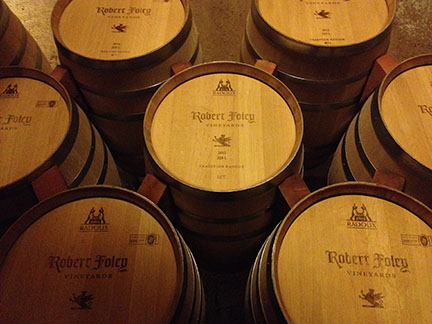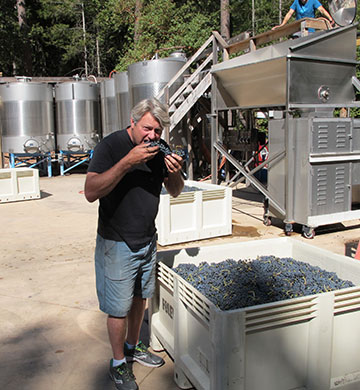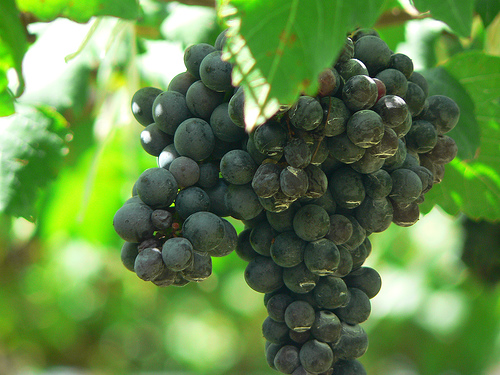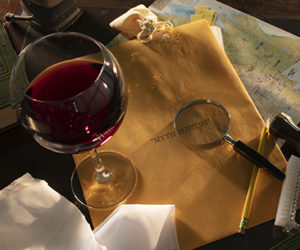
“I think the two biggest things for me were to get out of the science lab and get into the vineyard,” says Californian winemaker Bob Foley, known for decades of top-class Cabernet Sauvignon and Merlot.
Foley is referring to the mid-1970s when he graduated from UC-Davis with a degree in enology and fermentation science. He soon discovered that, beyond scientific know-how, making great wine is dependent on growing great grapes.
His career has always been rooted in California’s Napa Valley, these days at Robert Foley Vineyards and Switchback Ridge, where his sought-after bottlings are big and expressive. He also makes wine for Padis Vineyards and Engel Family Vineyards.
Foley came to fame during the 1990s at Pride Mountain Vineyards where he was Winemaker for 15 years. At that time he also made wine for Paloma Vineyard, whose 2001 Merlot was Wine Spectator’s 2003 Wine of the Year. He’s a Food and Wine Magazine Winemaker of the Year and wine critic Robert Parker has described his vino as “Virtually perfect.” He’s also known as a strong advocate for Petite Sirah and the lesser-known Charbono grape.
It starts in the vineyard
Perhaps more than many other top-flight winemakers, Foley is actually in the vineyard for much of the year. At a time in his career when many winemakers would slow down and delegate, he’s still at full throttle. At Robert Foley Vineyards, located on Howell Mountain, Foley himself still harvests 60 acres of vines (producing about 200 tons of fruit) together with his vineyard management team. He hired his first winery assistant in 2012 — prior to that he did all his own cellar work.“I love it,” he says. “It keeps me like a kid in a candy store.”
If you want to up your game as a home winemaker, says Foley, the choice is clear.
“There are lots of really, really good grapes, so find someone who can sell you some grapes and make sure they’re handled properly,” says Foley. “If you want to make great wine, get great grapes. Find a great grape source, keep looking — raise that bar.”
So when asking for tips from the maker of “liquid Viagra” (Parker’s description of a Foley Merlot), they all begin in the vineyard.
“The first technical approach to making great Cab is making great Cabernet grapes,” he opines.
During the growing season Foley is in constant contact with his vineyard manager. Together they sort out any water stress issues, nutritional questions, crop level determinations, the grapes’ sunlight exposure levels, and manipulating the canopy for more shade or increased airflow.
He recommends a meticulous and unforgiving approach to growing fruit.
“We look at every single cluster and if there’s something that’s not keeping up, or it’s still green, or it hasn’t gone through veraison while everything else has, we’ll go through and cut those off,” says Foley.
That has advantages later on. “By the time we’re ready to harvest there are no anomalies,” he says. “People ask me, ‘What sort of sorting belt do you use?’ I just laugh and say, ‘We don’t. We evaluate the fruit while it’s
not moving!’”
Evaluating grapes: Measurements not required

Choosing when to harvest is a question of understanding the changing flavors of a maturing grape. Foley recalls an amusing, slightly risqué anecdote that dates from well before the #MeToo movement:
“André Tchelistcheff (winemaking legend and a father of the Californian wine industry) told me one time, ‘Pay attention to this: A Cabernet grape that’s 25 degrees Brix is like an 18 year old girl. She’s really sweet, but she’s
not mature.’”
Foley explains in more precise wine terms: “In Cabernet, it’s the green olive flavor that goes away, and then, all of a sudden you’ve got red cherry and three days later it’s black cherry. That’s what I’m looking for!”
And, he adds lyrically, a hint of of chocolate in the finish also helps indicate Cabernet’s phenolic ripeness. “You spit the pulp out, then you just hang out and ponder what you’re tasting, now in your mouth, with the pulp gone. It’s a chocolatey, cocoa thing (that you should look for).”
With Merlot, he says, the grapes start veraison with bell pepper aromas that by harvest time convert to cassis.
Foley calls this perfect harvesting moment an inflexion point of ripeness. He says it can’t be found by only measuring the Brix or pH of the grapes. In fact, contrary to the norm, he doesn’t measure sugars before harvesting.
“I don’t even check sugars until we’ve picked it. Once it’s in the tank then I worry about chemistry.”
The little known grape called Charbono provides a great example how Brix levels don’t always indicate phenolic ripeness.
“If you use a refractometer and it measures 22 °Brix and you say, ‘Let’s pick it!’ You just screwed up royal!”
This rare variety turned Foley on to winemaking back in 1969. Foley was only 16 but his father’s enthusiasm for wine was starting to impact him. A neighbor took Foley on a visit to the famed Inglenook wine estate where he tasted a 1968 Charbono.
“I’d never tasted anything like Charbono before!” Foley says this wine epiphany led to him studying winemaking at UC-Davis.
In the early 2000s, when Foley assumed all the Charbono was gone (in the mid-1970s when Foley moved to St. Helena, California, only a few local wineries still bottled it), he heard that one of the last growers was about to bulldoze his vines. This vineyard owner turned out to be the now former Inglenook Charbono grower.
Soon afterwards, Foley was making wine out of these grapes and still does. Word spread fast.
“It seemed like every old hippie from North Berkeley showed up at my doorstep going, ‘Far out man! You’re saving it!’”
“The biggest challenge is knowing when to pick it,” he says. When it first reaches 22 °Brix, Charbono is not yet ripe. Foley says the sugar level won’t change even if you let Charbono hang for three more weeks.
“But the flavor development and the skins change. You can track that by feeling the softness of the fruit and by looking at the seed color as you wait for them to darken and harden.”
Perhaps Foley’s most important piece of winegrowing advice concerns the grape seed and its integral role as an indicator of phenolic ripeness.
“That whole system of phenolic compounds — that you and I and everybody else who enjoys wine experiences as texture, flavor, aroma, and color — the maturity of that tracks the maturity of the embryo,” he says.
“Once we’ve got dark brown seeds, soft fruit, and red stems, the last check is a pliability check. That’s by biting down gently on the seed and when the seed breaks, how does it break?” In the case of Cabernet seeds, if they break in half, usually with a slightly bitter taste, that means they are not ready to harvest.
“If the Cabernet seed breaks in multiple planes and it tastes as good as cereal, take the grapes; it ain’t going to get any better!”
Measurements begin in the winery
When the grapes are harvested, the chemistry starts. Foley does a juice panel for every cuvée that comes into the winery.
“I’m looking at the pH, but I’m also looking at the potassium and then the titratable acidities and evaluating that and asking, ‘So would this be healthier with just a dash of tartaric acid, just to bring the pH down a hair?’”
Inside the winery he’s still a work horse.
“I do cellar work, I do pump overs, and I stack barrels. My hands are blue! It’s just what I do, it’s what I’m passionate about.”
He’s happy to share the technical details for making his style of Cabernet. Foley has been described as the “God of Cabernet” and Wine Spectator’s James Laube said his Cabernet-based 2002 Napa Valley Claret is “Dark, rich and massive, with gobs of flavor.”
Picking is by hand and during the cool of night to reduce the chance of spoilage. The grapes come into the winery at temperatures in the 40s or 50s Fahrenheit (6–14 °C). Foley uses a Garolla crusher-destemmer, which he modified so the rollers can be moved closer or further apart to vary the intensity of the crushing. He also outfitted the machine with a variable speed frequency drive that helps control the integrity of the must.
The gently crushed fruit is deposited directly into a fermenting tank where 35 ppm of sulfite is added. Sulfite isn’t used again until the wine goes into barrel, unless it’s to maintain free SO2 levels at about 20 ppm. This level avoids what Foley calls a “Brett party” — he’s not a fan of Brettanomyces at any level and prefers to prevent it from growing.
“We can cold soak it for a day or two and then we can warm it up, inoculate it, and have the fermentation take off and go evenly.” Foley says this cold soak duration gives the extract balance he wants. All the tanks are jacketed and plumbed for heating and cooling, independent of one another.
Foley says during the first fermentation inoculated yeasts (he gets them from Scott Laboratories) are the best way to deal with his high-gravity musts (high in sugar) and high-alcohol levels.
“There’s a great Burgundy yeast that Scott Labs provide for the Pinot (Burgundy BRG Yeast), which is completely different from the Bordeaux yeast we use for the Cabs (Uvaferm 43 Yeast).”
“I do inoculate for primary fermentation, but I do not inoculate for malolactic.” He says in 42 years he’s never had an unsuccessful, natural malolactic fermentation. They’re usually over by Christmas — apart from one that took about a year to go through! Experiments suggest his malolactic bacteria comes directly from the vineyard.
“I like my primary fermentations to top out around 85 °F (29 °C),” says Foley. If yeast nutrients are needed, he uses Fermaid K.
“I let them extract at that temperature, pump over twice a day, then cool off down into the 70s (low- to mid- 20s °C) to finish up,” he explains.
The whole cuvaison period (the time when the juice is in contact with the skins) lasts about 10 days for Foley’s reds. Then it’s off to press.
Foley uses no more than one bar of pressure to press the grapes.
“I don’t keep my press fractions separate from my free run because I have a nice, gentle Euro Machines press (an open style membrane press that can hold a full 10 ton fermenter’s cap) that doesn’t macerate the fruit or tear the seeds.”
Of course, many home winemakers use a basket press to press their grapes. Foley says this can work well if you go slowly and learn the technique. He recommends pressing first and then breaking up the cake, mixing, and then pressing again. The key is to be gentle.
After pressing, he allows the wine to settle for a week, sometimes 10 days. Then Foley racks it off the gross lees with aeration to blow off CO2 and fermentation aromas. The aeration device is a simple splash rack, over the top into the receiving tank.
Then it’s straight to barrel — but neutral barrels, not new ones.
“In order to evaluate the work we did in the vineyard I go to dead neutral cooperage,” says Foley.
“This is where both Jim Laube and Robert Parker were interested (wine critics with Wine Spectator and The Wine Advocate, respectively). They said, ‘So do you go to 100% new barrels?’ I replied, ‘Absolutely not. For me that’s like over seasoning a sauce.’”
“The personality profile of each vineyard plot, and each pick, each cuvée is well ingrained into my memory,” he says.
He and his team evaluate the fruit for their Claret blend, the Napa Valley Cabernet, and their special Howell Mountain vineyard, and then prescribe both the type of oak — which is always French oak — and the percentage of new oak.
Foley says French oak marries best with the character of their grapes and he uses barrels with a medium-plus toast. These barrels are sourced from central France, mostly the Tronçais area.
The Claret varieties typically spend the most time in new oak — about one third. The rest of the time is divided between used and neutral oak, with more new oak added as necessary. The Claret is racked a few times a year.
“The wines tell me what to do. As long as you just keep smelling and tasting them and staying on top of it.”
His Pinot Noir is aged in 100% new French barrels, which are then used for Charbono, whose flavor profile clashes with new oak, says Foley.
He says tannin extracts can be an excellent tool but he doesn’t use them.
“I get great extract and great balance of tannins just naturally, and again, it’s what we do in the vineyard.”
So he says, for his wines, it’s not necessary to add bentonite, egg whites, or other additives for fining or adjusting flavors.
Just before bottling they run the wine through a crossflow filter, a process that is gentle and does not disrupt the wine. He says pad filtration can strip character and some wines can’t come back from that.
Foley says each new vintage revalidates that making wine is not about being a scientist and it’s not about being an artist.
“Everything in-between science and art is what we do; it’s a craft.” He compares it to cooking the perfect meal.
“You stick your finger in the sauce and let it speak to you. What’s it need? It finishes short, the aromas need to be lifted. It could be just that dash of salt, or that squeeze of lemon, or maybe just that kiss of tartaric acid at the beginning to make it perfect.”




